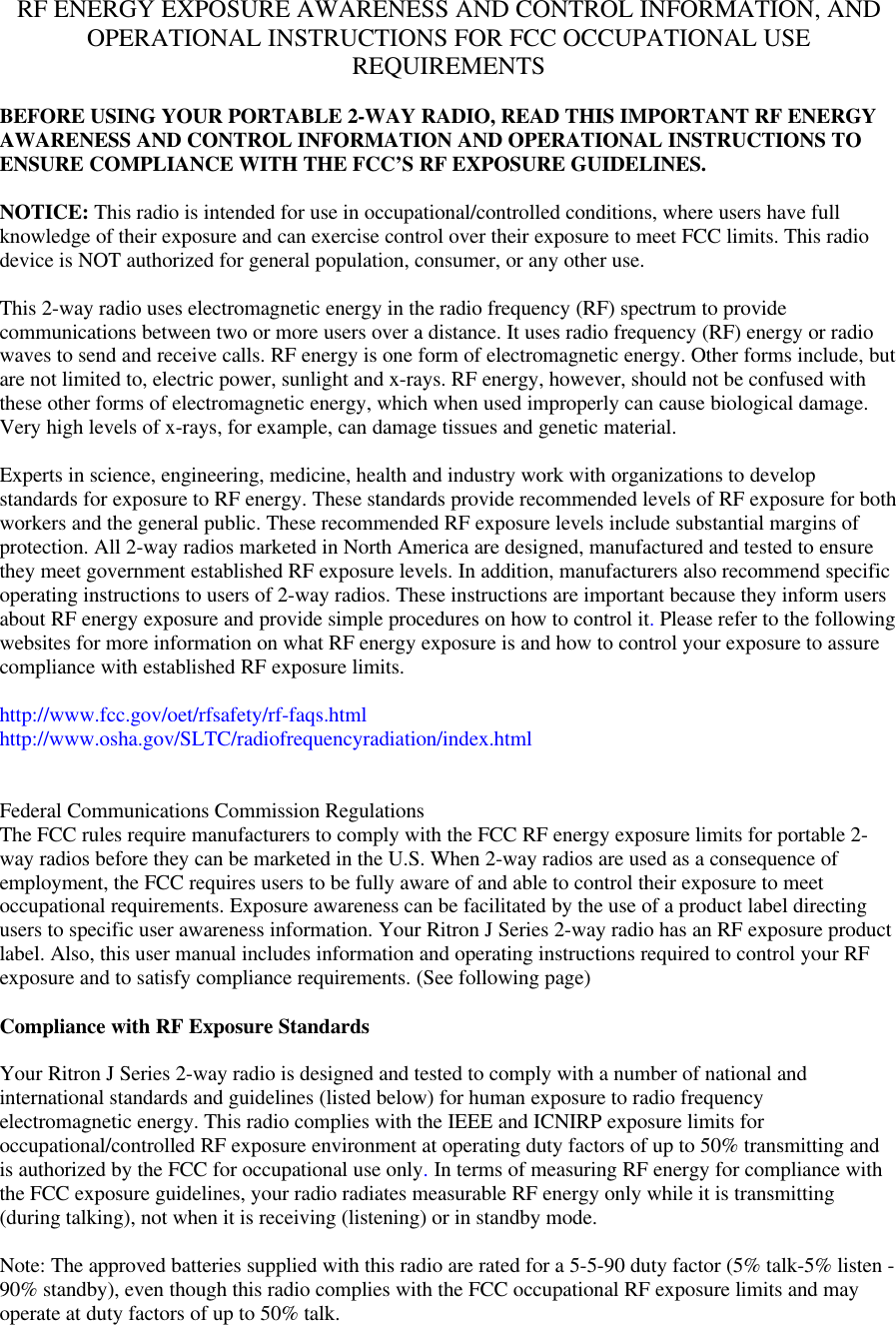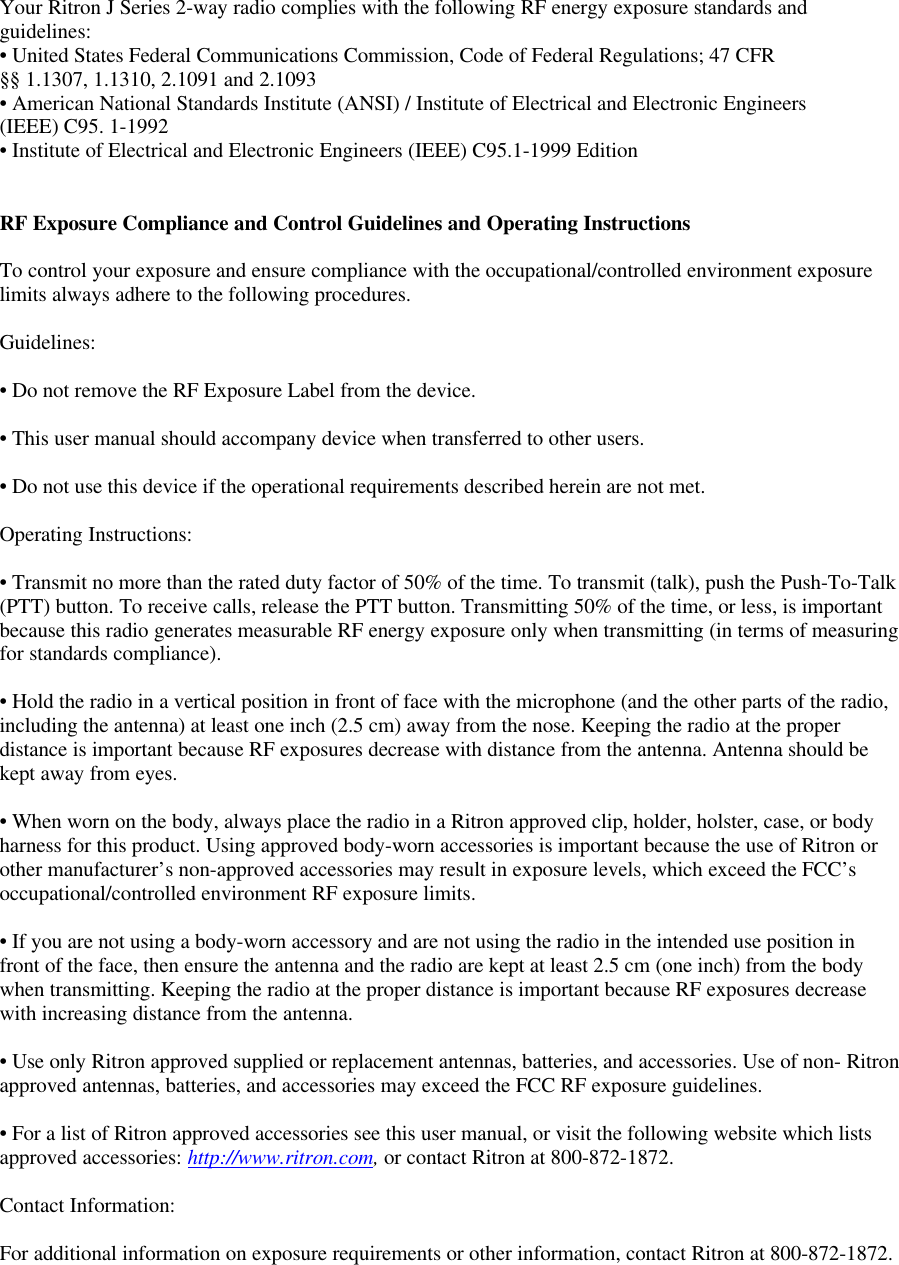Ritron RIT23-450 UHF-FM PORTABLE TRANSCEIVER User Manual J SeriesRF
Ritron Inc UHF-FM PORTABLE TRANSCEIVER J SeriesRF
Ritron >
Contents
- 1. USERS MANUAL
- 2. Users Manual final version
- 3. Users Manual RF Exposure specific instructions
Users Manual RF Exposure specific instructions

